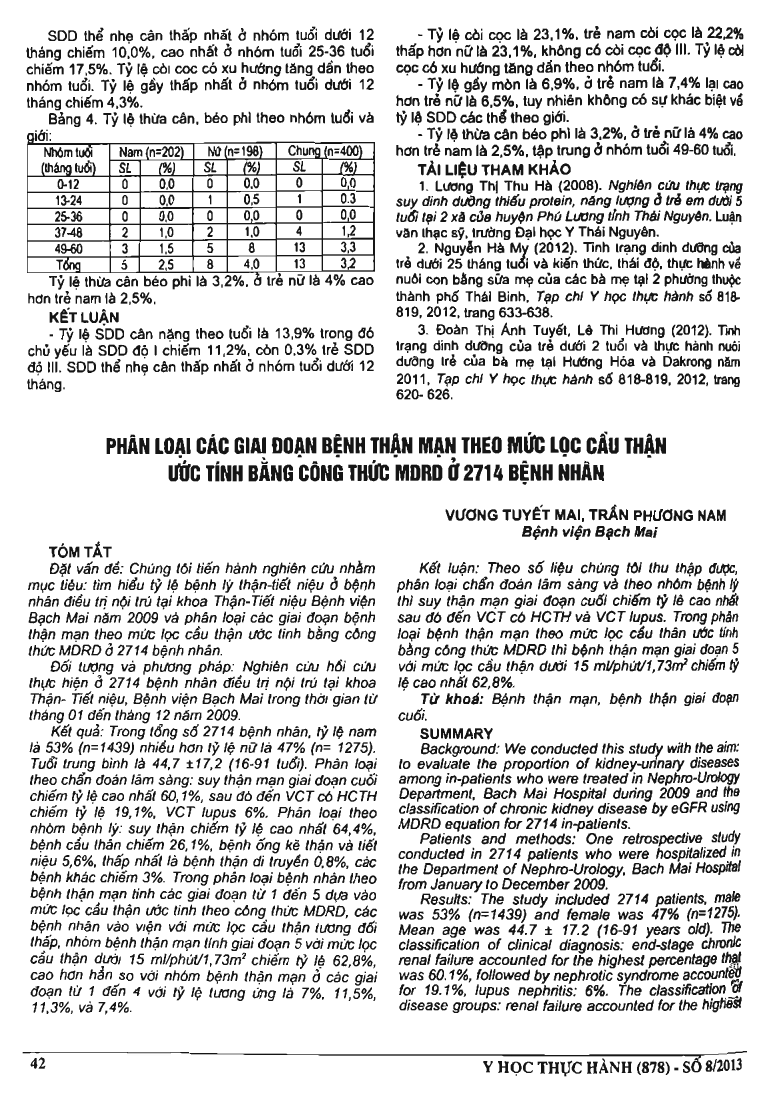
Background: the authors conducted this study with the aiming to evaluate the proportion of kidney-urinary diseases among in-patients who were treated in Nephro-Urology Department, Bach Mai Hospital; during 2009 and the classification of chronic kidney disease by eGFR using MDRD equation for 2714 in-patients. Patients and methods: One retrospective study conducted in 2714 patients who were hospitalized in the Department of Nephro-Urology, Bach Mai Hospital from January to December 2009. Results: The study included 2714 patients, male was 53 percent (n=1439) and female was 47 percent (n=1275). Mean age was 44.7 + or - 17.2 (16-91 years old). The classification of clinical diagnosis: end-stage chronic renal failure accounted for the highest percentage that was 60.1 percent, followed by nephrotic syndrome accounted for 19.1 percent, lupus nephritis: 6 percent. The classification of disease groups: renal failure accounted for the highest percentage that was 64.4 percent, glomerular diseases accounted for 26.1 percent, renal tubular interstitial and urinary tract disease 5.6 percent, the lowest percentage of genetic kidney disease: 0.8 percent, and other diseases: 3 percent. The classification of chronic kidney disease based on estimated glomerular filtration rate (eGFR): most of patients were hospitalized with eGFR was relatively low, the chronic kidney disease stage 5 with eGFR under 15 ml/min/1. 73m2, accounting for 62.8 percent, higher than groups of chronic kidney disease stages 1 to 4 with the corresponding ratio was 7 percent, 11.5 percent, 11.3 percent, and 7.4 percent. Conclusions: In the study, the cclassification of clinical diagnosis and disease groups: end-stage chronic renal failure accounted for the highest percentage, followed by nephrotic syndrome and lupus nephritis. The classification of chronic kidney disease based on eGFR using MDRD equation: The chronic kidney disease stage 5 with eGFR under 15 ml/min/1.73m was the highest percentage, accounting for 62,8 percent.
- Đăng nhập để gửi ý kiến
